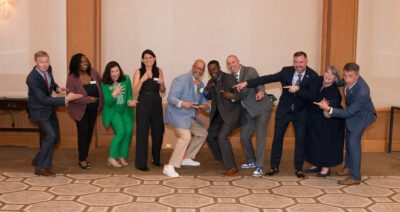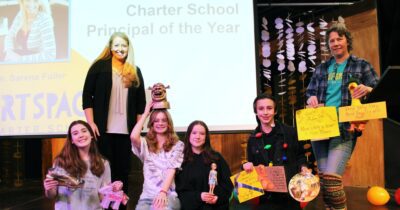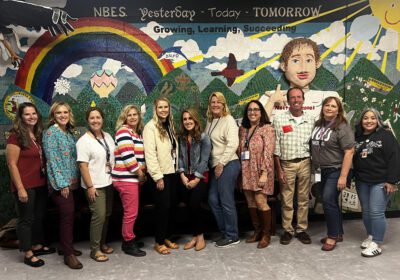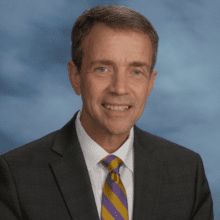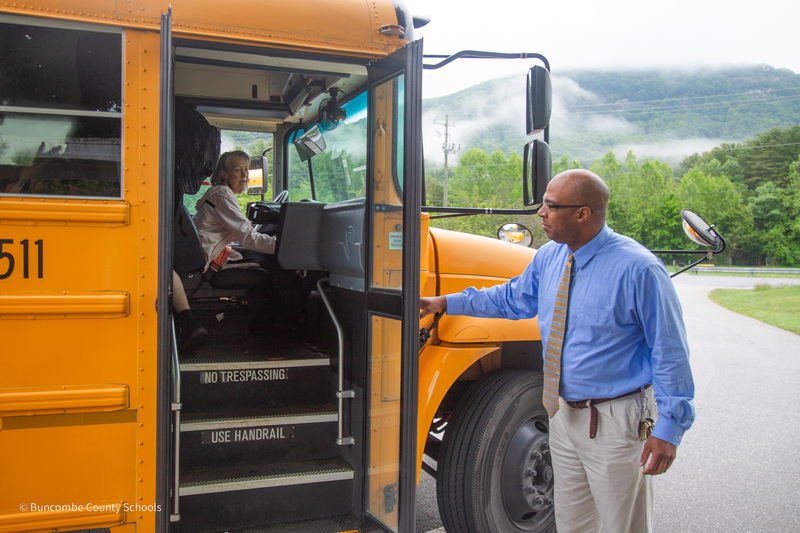
|
|
A mist hangs across the asphalt as a solitary figure walks into the halo cast by the street light above. Through the early morning darkness, the figure strides with purpose towards the large yellow giants that fill the parking lot. These goliaths are well-known in communities across our state and nation. They are the school buses that travel tens of thousands of miles every day to safely deliver students from home to school and back again.
The solitary figure is also well-known, though few realize that this hike across the bus lot is one taken every morning and again each afternoon. This person walking through the gloom of the predawn hours is the school principal greeting and checking on each bus driver, ensuring buses begin their routes on time so that children, adolescents, and teenagers are not waiting at their bus stop any longer than they have to.
As the buses pull away, the principal returns to the building and the myriad responsibilities that await, each carefully listed on a “To Do List” that may be delayed by the inevitable surprises that occur throughout the day. Greeting staff members, overseeing the serving of breakfast, and the supervision of early-arriving students will fill the minutes before the first bell rings to announce the start of a new school day. From that moment until sometime well into the night when evening events conclude, the pace will be non-stop and unforgiving.
There is much to be done in leading this school community in the crucial and critical work of preparing students for bright futures.
From the bus lot to the schoolhouse door, the rhythm of a principal’s day is one of presence, problem-solving, and people-first leadership.
— Superintendent Rob Jackson
In 2021, Dr. Jason Grissom of Vanderbilt University, Dr. Anna Egalite of NC State University, and Dr. Constance Lindsay of UNC-Chapel Hill published a landmark study through the Wallace Foundation titled “How Principals Affect Students and School: A Systematic Synthesis of Two Decades of Research.”
The opening words of their summary say it all: “Principals really matter.” The italics on “really” underline what decades of research make plain: principals profoundly shape student outcomes, teacher effectiveness, and school culture.
Perhaps that finding is not a surprise. Many might agree that principals really matter when considering the operation of a school. What is not as well known is just how much principals matter to students, parents, teachers, staff, and the community in influencing student outcomes.
A key finding is that effective principals are at least as important for student achievement as previous reports have concluded — and in fact, their importance may not have been stated strongly enough. That a principal checks on buses early in the morning or supervises students or oversees the cafeteria as a meal is served might not be a revelation. The measurable impact on student achievement though is probably not as well-known outside of education circles.
![]() Sign up for the EdDaily to start each weekday with the top education news.
Sign up for the EdDaily to start each weekday with the top education news.
Principals are the designated instructional leaders in the schools they serve. Although they are not directly teaching students, principals significantly impact student achievement through strengthening teachers’ instructional practices, shaping the instructional environment, cultivating collaboration between educators in the building, and supporting innovation.
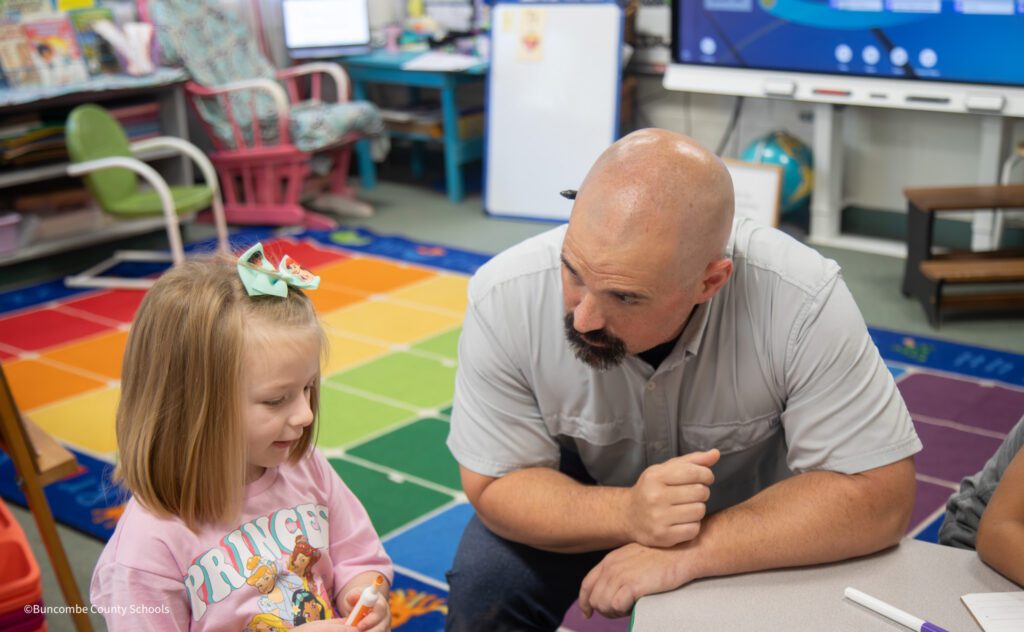
Throughout the building, the sounds of laughter and conversation greet the principal as they enter each classroom. Students are accustomed to the frequent visits. The principal drifts from student to student taking a look at their work, pausing to ask what they are learning, and offering praise for the grit and determination that underlies their success. The principal is also keenly aware of what the teacher is doing, checking for opportunities to help in the moment, sharing a word of appreciation, or making a note of a best practice to share with the teacher later.
From classroom to classroom, the principal travels pushing along a mobile office that was once used as a portable television cart and now gives a landing space for the principal’s laptop, radio, notepad, and encouragement stickers or school bucks to hand out to students who are modeling school expectations. There is no time to spend at the desk in the principal’s office and so this makeshift desk on wheels serves the dual purpose of rolling workspace and as an easy beacon to find the principal when spied sitting outside of a classroom the principal has slipped into.
Each classroom visit reveals how the school, how the teachers, and how the students are doing. It is this anecdotal data that the principal compares to reports that measure academic proficiency and growth, student attendance, and discipline to determine if the school mission and vision are being actualized in the daily life of the school. In ensuring and maintaining alignment to the state’s Standard Course of Study, the district’s strategic plan, and the school’s improvement plan, the principal guides the team in purposefully and intentionally focusing on the needs of each and every student.
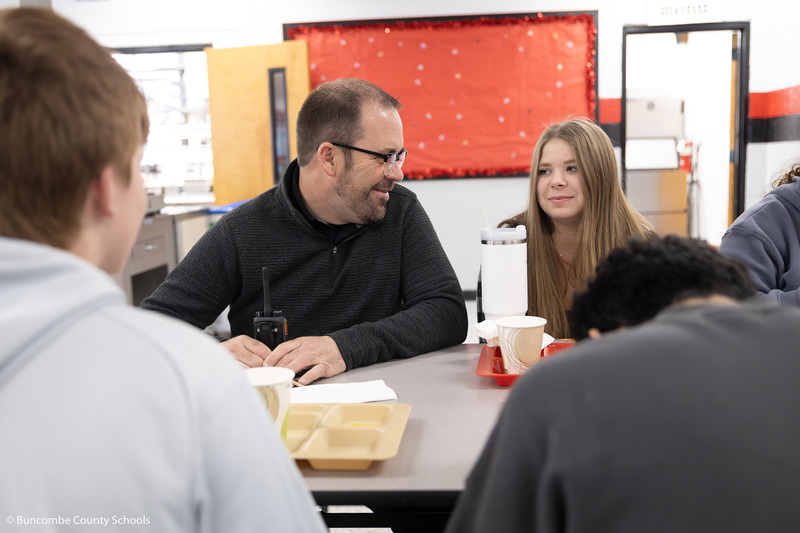
A bell rings out, signaling that lunchtime has arrived. The principal heads into the cafeteria for some of the most important work of the day. It is here amidst the lunchroom tables that quick conversations checking in with individual students allow the principal to gauge how students are doing. One student’s response might spark a later conversation with the school counselor seeking assistance for the student, an opportunity to help that might have been missed if the principal was not present in the cafeteria and more importantly, present in the moment with the student. A scan across the room ensures that each student has something to eat.
Food is the most important school supply.
— Superintendent Rob Jackson
Hungry children cannot learn as well. Here in the cafeteria, the principal is likely to be found sweeping the floor or wiping down tables so that the next group of students to arrive are treated to a clean and inviting space to eat and relax. The principal has never been asked to sweep or mop or clean, and yet, the principal naturally gravitates to anything that ensures students and staff have the welcoming environments they deserve.
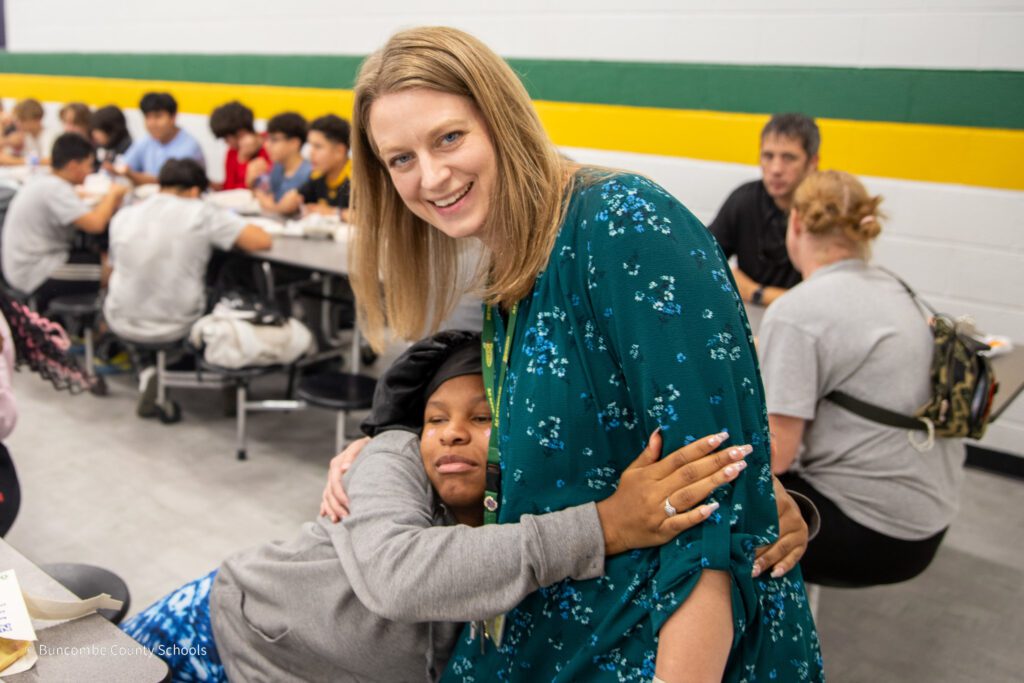
As the final lunch bell sounds to send students scurrying back to class, the principal, mobile office in tow, heads down the hallway to the grade level or department meeting just beginning. Often referred to as PLCs or Professional Learning Communities, these gatherings allow faculty members to probe student data offering each other ideas for how to meet the individual and unique needs of each student. Here they will review their plans for high-quality instructional activities and will think through how students are grouped and regrouped throughout a lesson to allow just-in-time enrichment or remediation, meeting the academic student needs as they occur. It is in these meetings that the principal joins in as a fellow educator and learner, guiding conversations, sharing best practices, and encouraging careful reflection of the work done in each classroom.
The principal has worked hard to create and encourage this collegial environment where teachers are unafraid to share their own challenges and their triumphs. The principal knows that collaboration and productive conversation birth solutions while isolation and exclusion lead to teacher burn-out and lack of progress by students.
The radio crackles as the principal is called away from the meeting to head to the office to meet with a parent who has just arrived. The plans for the afternoon evaporate as this unexpected, but welcome visitor waits to sit down with the principal. Over the course of the conversation, the principal learns why a student has seemed disconnected and distracted. A loss in the family has left the household reeling and it is showing in the student who is first and foremost a child struggling with big emotions. Together, over a box of tissues, parent and principal discuss a plan to support the child they both love. The classroom teacher and school counselor will be brought into the conversation as will the physical education teacher who is a special favorite of the student. Together, the team will make sure the student is supported and has a place in the school to “get-away” for a few moments when the need arises. A school-based therapist, with permission from the parent, will be on standby.
Through it all, the principal is a caring partner for the parent, a helpful teammate for the staff, and an advocate for the student.
— Superintendent Rob Jackson
As the parent heads-out, feeling much better with a team to count on, the principal slips down the hallway to check on that sink with the leaky faucet before popping into a couple of classrooms before the school bell tolls to announce the day’s end.
Students pour from classrooms, following teachers and staff to the doorway for car riders and walkers or joining the principal in heading back out to the bus lot. The principal, once again alone where the day started, waves as the buses pull away carrying their precious cargo.
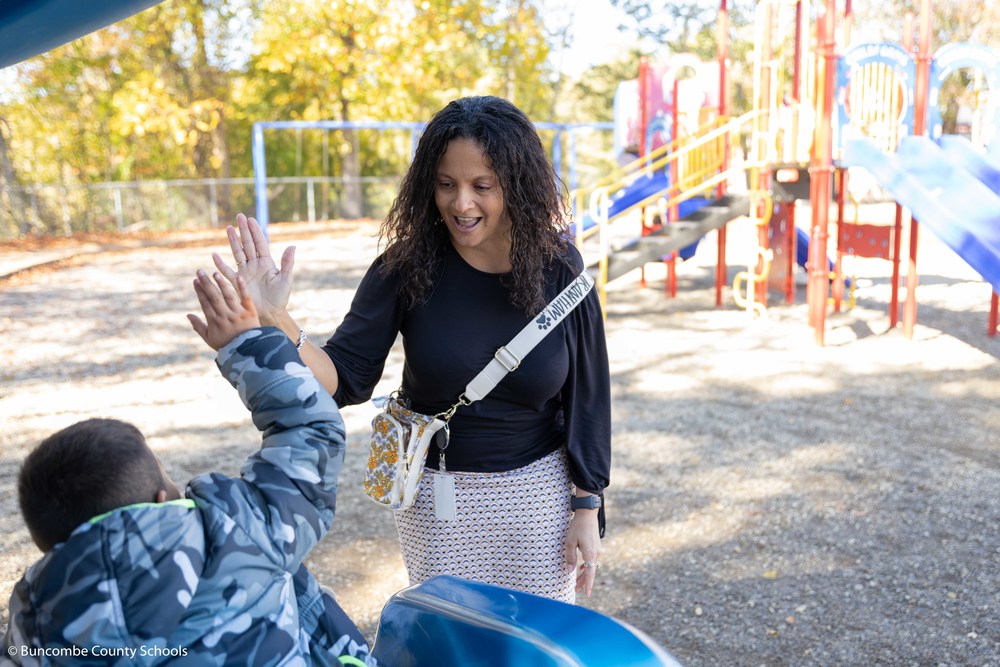
The solitary figure turns to reenter the building with an afternoon meeting, an evening athletic competition, and an inbox that has been filled with email during the day waiting inside. There are hours to go before the principal will leave campus. This work is physically, emotionally, and mentally draining. Yet, when asked why they keep going, the principal simply smiles and says, “because our students are worth it and our teachers deserve my best.”
The Wallace Foundation report states, “An effective principal’s impact is stronger and broader than previously thought, making it ‘difficult to envision’ a higher return on investment in K-12 education than the cultivation of high-quality school leadership.”
Our collective future rests in today’s classrooms. Principals help shape that future through every decision, every relationship, and every act of service. Principals really do matter — because our children and our teachers really do deserve nothing less than the very best.
Recommended reading
